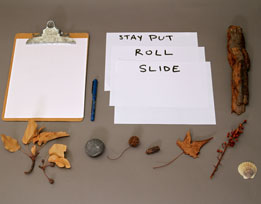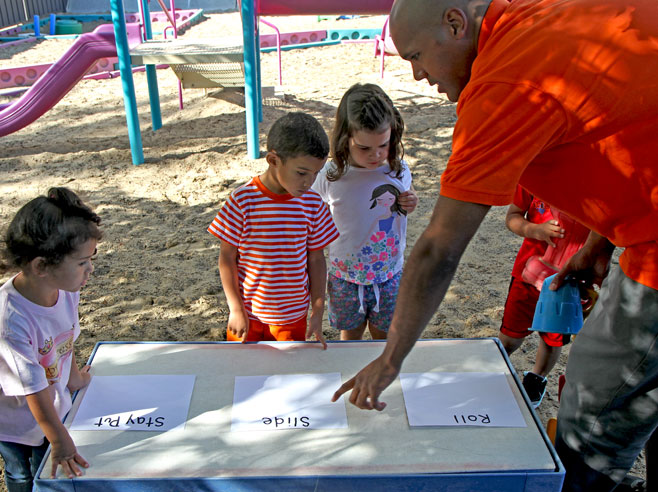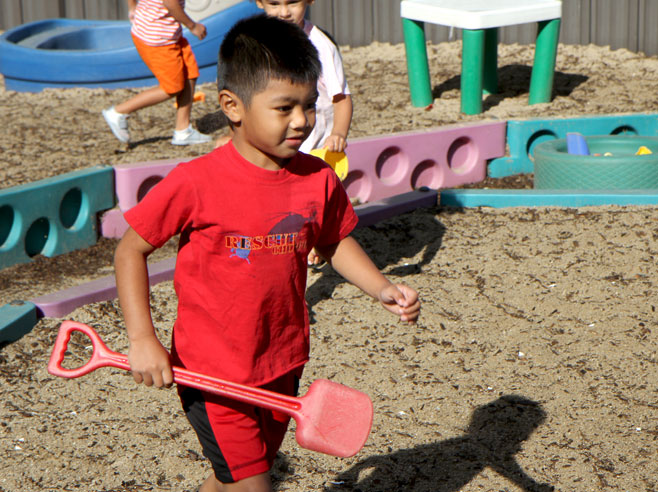Outdoors, children send objects down a slide and sort the objects into sets: things that roll, things that slide, and things that stay put. They compare the results with earlier predictions.
Materials

- Clipboard
- Marker
- Objects to send down the slide (such as a stick, a leaf, a pebble, an acorn, a pinecone)
- 4 sheets of paper (for clipboard chart and sorting signs)
- Playground slide (an indoor classroom slide would also work)
Preparation
- Gather a collection of objects to send down the slide, or plan to do this with children.
- Make a three-column prediction chart on the clipboard paper. Label the columns ROLL, SLIDE, and STAY PUT.
- Create the ROLL, SLIDE, and STAY PUT signs for sorting the objects.
Directions: Lesson 4
Outdoors
This activity extends the explorations done during the Guided Small Group Sorting Objects activity and will be reviewed as a whole class in the Sorting Objects Revisited Circle Time: Wrap-Up activity.
- Before heading to the playground, talk to children about a slide: What does it feel like to slide down a slide? Have you ever put anything on a slide to see how it would move? Tell us about how it moved down the slide.
- Show children a small collection of objects (such as a stick, a leaf, a pebble, an acorn, a pinecone, etc.) and ask them to predict what will happen when each object is placed on the slide. Ask children to describe the shape of each object. Then have them predict how each object will move down the slide.
- Will it roll? Will it slide? Will it stay put? Why do you think that?
- If some objects do not move, invite children to think how they could make those items move. (A push can provide additional force.)
- Write down children’s predictions on the clipboard chart.
- Children may have different opinions. If they do not reach a consensus through discussion, choose how to record the prediction. For example:
- Take a vote and record the majority opinion on the prediction chart.
- Acknowledge the different predictions, then choose a child or pair of children to decide in which column of the chart to record the object.
- Children draw a sketch of the object in both columns, to indicate that some children predict it will slide and some predict it will roll.
- Have children send objects down the slide and sort the objects into groups around each sign: ROLL, SLIDE, and STAY PUT.
- If some objects move in an unexpected way, invite children to describe how the object moved. Why do you think it moved that way?
- Compare the results with the children’s predictions. Did some things, like the pinecone, slide if placed tip down but roll if placed crosswise?


